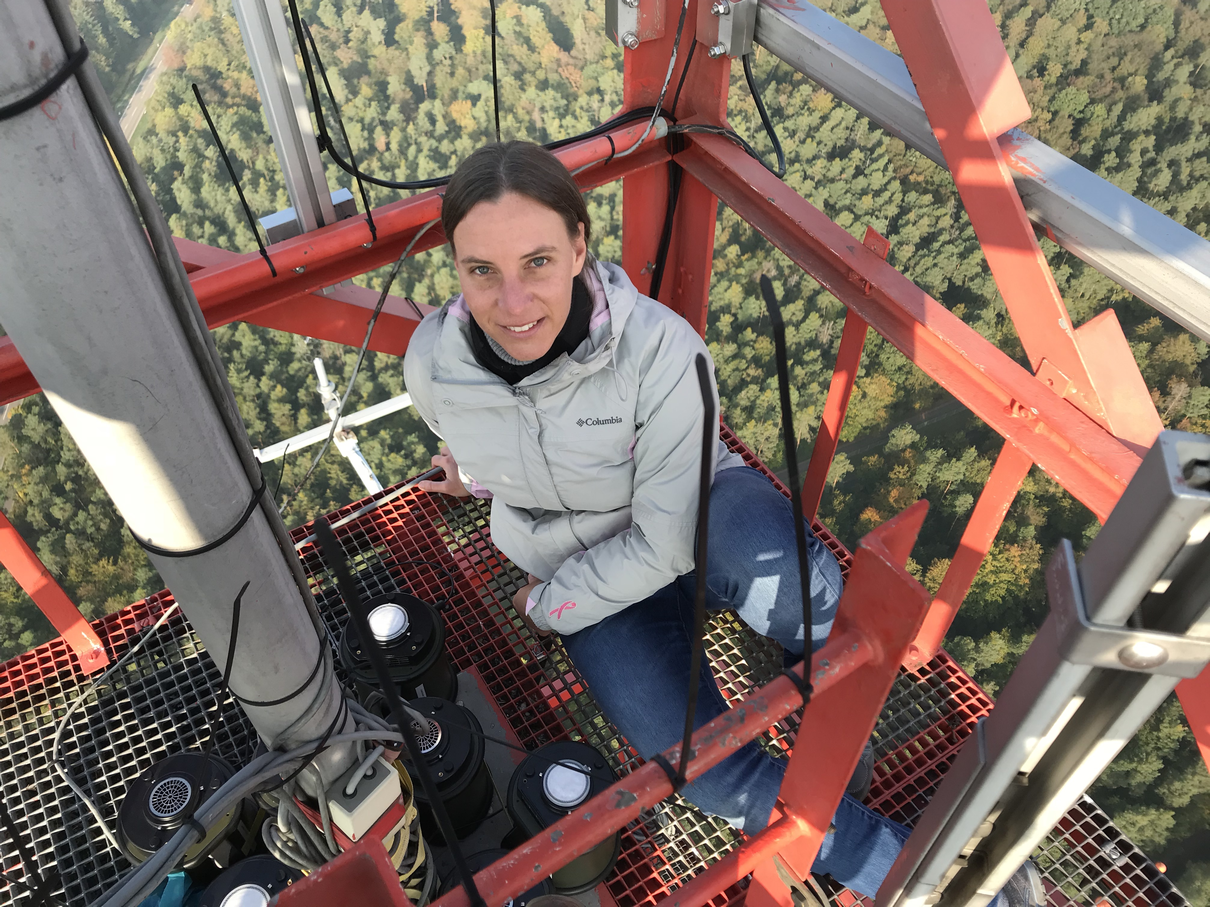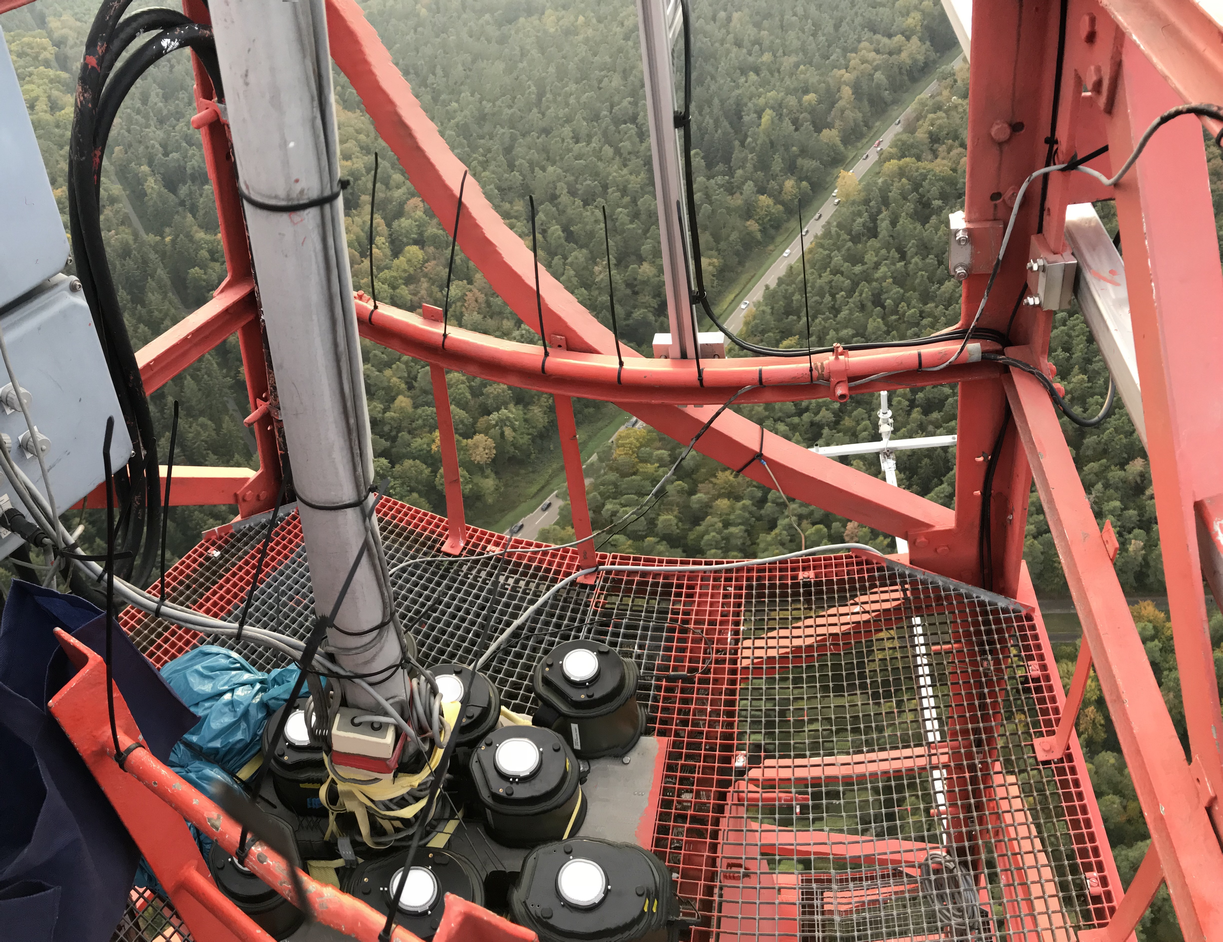“Vertical mapping” of airborne microorganisms with measurements from KIT meteorological tower

Inorganic particles exist in the oceans and in the atmosphere as well as organic particles, i.e. living substances. The atmospheric section of these very small scale living aerosol are named the „air microbiome“. Most parts of the air microbiome are bacteria and fungi, which largely remain suspended in air once they are blown off the earth’s surface. Only a fraction of these microorganisms finds its way back down to the surface, when they are washed down or fall back down together with larger particles such as sand grains or dust. Taking air samples at different altitudes allows to sequence the individual species in the laboratory.
In a landmark study of airborne microorganisms in the lower troposphere, scientists led by Stephan Schuster from the Nanyang Technological University, Singapore (NTU, Singapore) in cooperation with Ulrich Corsmeier from the Institute of Meteorology and Climate Research (KIT, Karlsruhe) and Thomas Feuerle from the Institute for Flight Guidance (IFG, Technische Universität Braunschweig) have found that bacteria and fungi populate the atmosphere in very specific ways and if changed, may impact human health and food supply.
Within a combined field study performed at the 200-meter high tower of KIT and with the research aircraft DO 128 of IFG, air probes were taken. It was found that air temperature was the single most important factor influencing the composition of airborne microbial communities in the lower troposphere. As the temperature of the air changes, the species found and the ratio of bacteria to fungi change significantly. These findings suggest that the currently observed increase in global temperature will have an impact on the atmospheric microbial ecosystem.
The study is published in the Proceedings of the National Academy of Sciences of the United States of America (PNAS) titled “Vertical stratification of the air microbiome in the lower troposphere”; DOI: 10.1073/pnas.2117293119.
A short introduction into this field of atmospheric research is given by a popular science videoclip: https://www.youtube.com/watch?v=i765V0qytH0
Key discoveries
A total of 480 air samples were collected during five daily cycles at the KIT tower and during five flights of the research aircraft in the vicinity of Braunschweig, in heights between 300 m and 3500 m. During the measuring campaign in October 2018 the weather in Karlsruhe and Braunschweig was characterized by high-pressure system over central Europe with neglecting large-scale advection. The probes were sequenced at the NTU laboratory in Singapore.
The main finding was that the composition of microorganisms above 1,000 meters was stable, independent of day or night. The team identified over 10,000 different species of airborne microbes above 1,000 meters. This was very different from the air samples taken below 300 meters, which follow a daily cycle, where the air composition changes from bacteria and some fungi dominating during the day, to wood-rotting fungi dominating at night.
With respect to atmospheric conditions it is shown that turbulence is the primary driver of microbial aerosol dynamics, which determines how microorganisms are distributed. Driven by the day/night temperature changes, air masses become layered at night and mixed during the day, resulting in the stratification of the air microbiome within the boundary layer and above.
Researchers further noticed that higher air layers contained an up-to-20-times higher concentration of radio-tolerant bacteria, which are known to withstand ionising radiation, desiccation, UV radiation, or oxidizing agents. One of these bacteria, known as Deinococcus Radiodurans is able to withstand a 1,000-fold higher radiation dose than the human body.
Scientific perspectives
The study steps forward showing that air has its own microbial ecosystem, much like those on land and in the sea. We expect that changes in the air microbiome will also have knock-on effects on terrestrial and aquatic ecosystems. With the new dataset as a baseline, scientists can also model and predict the changes in the air microbiome if temperatures were to rise in a future climate.

